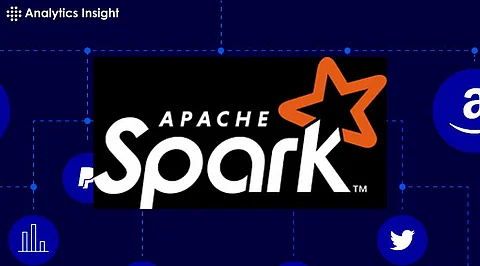

In the age of data-driven decisions, big data processing has become an integral part of various industries from healthcare to finance. Apache Spark has emerged as one of the most popular frameworks for handling vast amounts of data efficiently. Designed to be fast flexible and scalable, Spark is widely adopted for processing large datasets in a distributed environment.
Apache Spark is an opensource distributed computing framework specifically designed for large data processing Spark allows developers to build applications that can analyze data quickly across clusters of computers What sets Spark apart from other big data processing frameworks is its ability to process data inmemory reducing the time spent on reading and writing data to disk
Spark is used for a wide range of applications including batch processing realtime streaming machine learning and graph computation Its versatility makes it a goto choice for data engineers and data scientists who need a unified platform to handle complex data workflows
1. Speed: Sparks in memory computation capability make it much faster than traditional big data frameworks like Hadoop. It can perform data processing tasks up to 100 times faster than MapReduce Hadoop’s default engine.
2. Ease of Use: Spark offers simple APIs in multiple languages including Java, Python, Scala, and R making it accessible to a wide range of developers.
3. Unified Platform: With Spark, you can perform various types of data processing, batch processing, stream processing, and interactive queries all within the same platform.
4. Scalability: Spark can efficiently distribute tasks across a cluster of machines allowing for the processing of petabytes of data with ease.
5. Real Time Processing: Apache Sparks Structured Streaming API allows for realtime data analysis and processing making it ideal for industries that require uptotheminute data insights
Apache Spark operates on a master-slave architecture comprising a driver program and multiple executors. The driver coordinates the execution of tasks across the cluster while the executors are responsible for performing the actual computation.
Driver: The main program that schedules jobs and tasks.
Executors: Worker nodes that run tasks and store data locally.
Spark divides tasks into stages based on data dependencies and distributes them across worker nodes to perform parallel processing. This architecture allows Spark to handle large datasets efficiently whether in a local mode or a clustered environment.
1. Spark Core: The foundational engine for large-scale parallel and distributed data processing. It handles basic IO functionalities task scheduling and memory management.
2. Spark SQL: Enables querying structured and semi-structured data using SQL-like queries. It integrates seamlessly with other big data tools like Hive and Hbase.
3. Spark Streaming: Processes real-time data streams such as those generated by IoT devices or social media platforms. This component provides near real-time processing of live data.
4. MLlib: Sparks machine learning library that provides scalable algorithms for classification clustering and recommendation.
5. GraphX: A distributed graph processing framework built on top of Spark allowing developers to perform graph computations at scale.
1. Speed and Efficiency: Sparks in memory computing reduce the need to read and write data to disk speeding up processing times.
2. Fault Tolerance: Spark automatically recovers lost data and failed tasks making it reliable for critical applications.
3. Flexibility: From ETL tasks to machine learning and real-time analytics, Spark can handle diverse workloads within the same framework.
4. Community Support: Being an opensource project, Spark is constantly evolving with the help of a strong developer community that contributes to new features bug fixes and optimizations.
1. Real-Time Data Processing: Companies like Netflix and Uber use Spark to analyze streaming data in real-time, enabling quick decision-making and customer response.
2. Machine Learning: Sparks MLlib library is widely used in predictive analytics for healthcare finance and e-commerce sectors.
3. Data Lakes: Spark integrates well with data lakes allowing for efficient data processing and querying of massive datasets.
4. ETL (Extract Transform Load): Spark simplifies ETL workflows by enabling the transformation and integration of large datasets across various sources.
To start using Apache Spark for big data processing, you’ll need a basic understanding of distributed computing and programming in a language like Python or Scala. Spark can run on your local machine for smaller projects but for larger datasets. It’s often deployed on cloud platforms, such as AWS Google Cloud or Microsoft Azure or on Hadoop clusters.
1. Installation: Download and install Spark from the official Apache Spark website. You can run it locally or set it up on a cluster for distributed computing.
2. Programming: Choose a programming language compatible with Spark such as Python Scala or Java. Spark provides APIs for these languages making it easier to write and execute data processing tasks.
3. Data Processing: Once Spark is set up, you can begin processing large datasets using Resilient Distributed Datasets (RDDs) DataFrames or SQL queries.
4. Cloud Integration: Most cloud platforms including AWS and Google Cloud offer managed Spark services that can scale according to your workload.
Apache Spark has revolutionized the world of big data processing with its speed scalability and versatility. Whether you’re analyzing streaming data in real-time training machine learning models or managing large ETL pipelines. Spark offers a unified solution that meets the demands of modern data processing tasks. Its in-memory computation model and fault tolerance ensure that it remains a popular choice for data engineers, analysts, and scientists alike.
